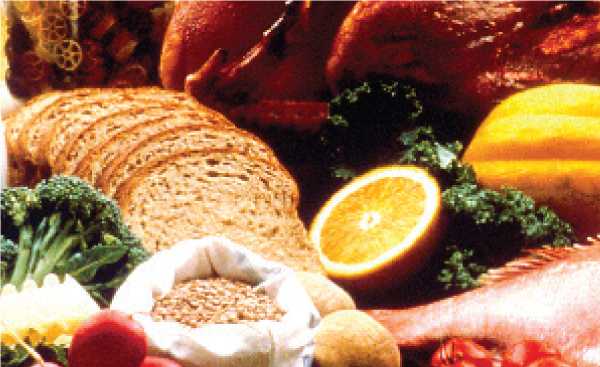CELLULITE busting foods
Ask any woman five body issues that truly bother her and you can bet cellulite will be one of them. Also referred to as the orange peel, cellulite affected skin


Ask any woman five body issues that truly bother her and you can bet cellulite will be one of them. Also referred to as the orange peel, cellulite affected skin can be smoothened with foods. Read on for useful tips…
Cellulite can appear on any part of the body where fat is stored but it is mostly noticeable on the thighs and buttocks where the skin appears dimply or like the orange peel. Cellulite appears when fat deposits under the skin push through connective tissues. Hormone imbalances, your genes, excess weight, circulation problems, inflammation, a sluggish lymphatic system, fluid retention and stress can all play a part in the development of cellulite. It is not only fat people who get cellulite as slim and athletic people also do due to hormonal imbalances. Whatever the cause, you don’t have to sit and moan the loss of your once smooth skin, you can do something about it. Start with your diet.
Eat more vegetables
If the hormone oestrogen is imbalanced in your body, you are likely to suffer from cellulite. You therefore need to support the pathways that help rid the body of excessive oestrogen and other toxins, particularly the liver. The liver is an important organ in helping the body get rid of toxins and you can aid its function through a healthy diet. Vegetables especially broccoli, cabbage, cauliflower and Brussels sprouts support the liver’s detoxification enzymes. You should also eat plenty of sulphur-rich onions and garlic to help the liver get rid of toxins build-up from hormonal imbalances.
Stay hydrated
You need to stay hydrated to help your body eliminate waste and reduce water retention. Drinking at least eight glasses of water a day is recommended, in addition to taking other vitamin and mineral laden juices. Drinking freshly prepared vegetable and fruit juices will not only give you optimum nutrition benefits but will also do wonders to your skin. Try a mixture of avocado, cucumber and broccoli juiced together for a potent antioxidant. You can add fresh apple for sweetness and blue-green algae sprinulina or chlorella for a micronutrient-packed drink. Vitamin C is vital for creating healthy collagen so ensure to regularly eat whole or juiced kiwi, orange, pawpaw and pineapple.
Avoid fluid retention
You need to eat foods that help flush your system to avoid body fluid retention. Foods that act as natural diuretics to help fight fluid retention include cucumber, celery, asparagus, tomatoes, garlic, artichoke, parsley, cranberries and watermelon. Eating potassium rich foods will also help rebalance fluid levels and good sources include bananas, dried apricots, spinach, sweet potatoes, cantaloupe (sweet) melon and low-fat dairy.
Eat enough protein
Your skin needs protein to help boost collagen. Good sources of protein include fish, chicken, eggs, beans and pulses. These contain amino acids that help your body produce collagen, which helps support your skin. Ensure to eat a good portion of lean meat, beans, lentils or eggs daily.
Go for berries and red grapes
Red grapes, red grape juice and red wine contain plant chemicals said to block enzymes that break down collagen, so eat and drink red. A grape seed extract or resveratrol supplements for a high dose of the chemicals will boost the effect of blocking the enzymes. You should also eat healthy berries including raspberries, blackberries, blueberries and strawberries as they support capillary repair.
Don’t eliminate good fats
Some women avoid fats altogether when they are trying to lose weight or lower cholesterol levels but healthy fats are essential to the body. Omega-3 fatty acids hydrate the skin and expand blood vessels to improve circulation and blood flow. Good sources include oily fish such as sardines, mackerel, fresh tuna and salmon. Ensure to eat these twice a week to reap the benefits. If you are vegetarian, include plenty of plant-based omega-3 sources such as walnuts, flaxseeds, or flax oil, pumpkin seeds and soya beans.
Have you heard of goji berries?
Some health and nutrition experts refer to goji berries as “cellulite assassinators” because of their power to reduce cellulite. These small pink berries, used for centuries in Chinese medicine, are bursting with potent micronutrients for healthy cell function and antioxidants to protect skin cells. If you can’t get the berries, go for the juice (available in some supermarkets and health food stores) and ensure to have at least 30ml a day.
Foods to avoid
• Salt encourages your body to retain water, so avoid adding it to food. Steer clear of processed foods such as bacon, sausages and crisps and ready meals that may have high salt or sodium content.
• Sugar contributes to inflammation in the body as well as encouraging the storage of fat by boosting insulin production. Avoid sweet treats, especially processed ones such as cakes and biscuits.
• Keep saturated fats and hydrogenated vegetable oils to a minimum.
• Caffeine and alcohol put a strain on your liver, so cut down on them.





